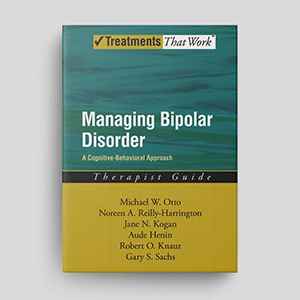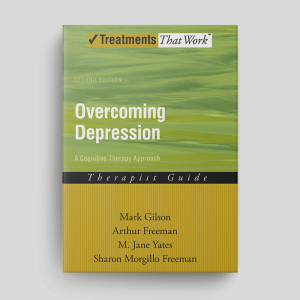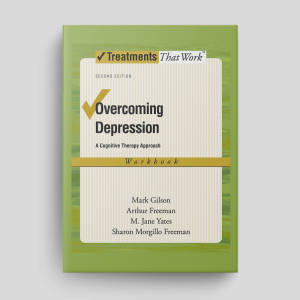Managing Bipolar Disorder: Workbook
The Managing Bipolar Disorder program provides step-by-step instructions and evidence-based strategies for supporting individuals experiencing bipolar disorder. It is designed for use alongside pharmacological treatment and provides practical tools for mood stabilization, relapse prevention, and improving coping skills to support clients in managing their disorder effectively. A therapist guide is downloadable separately.
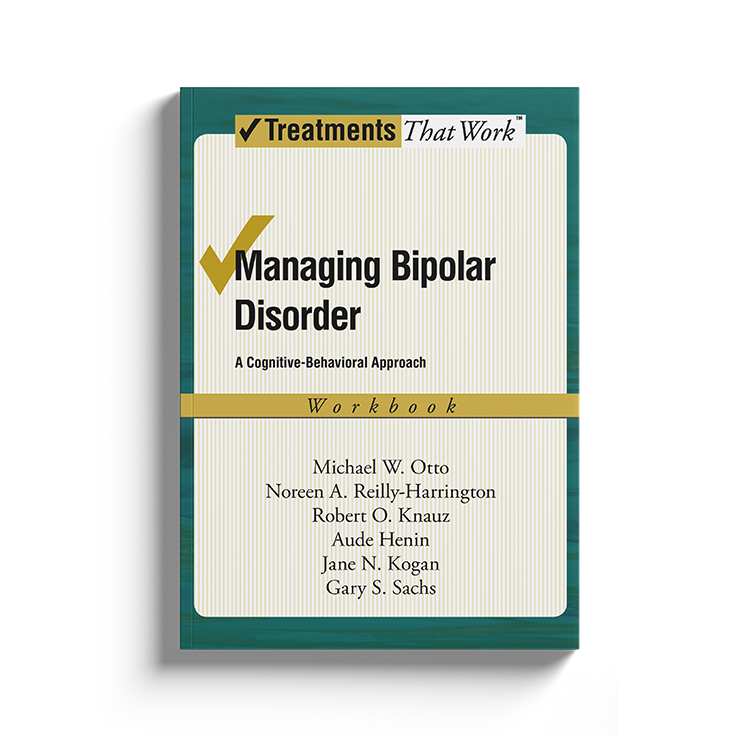
Download or send
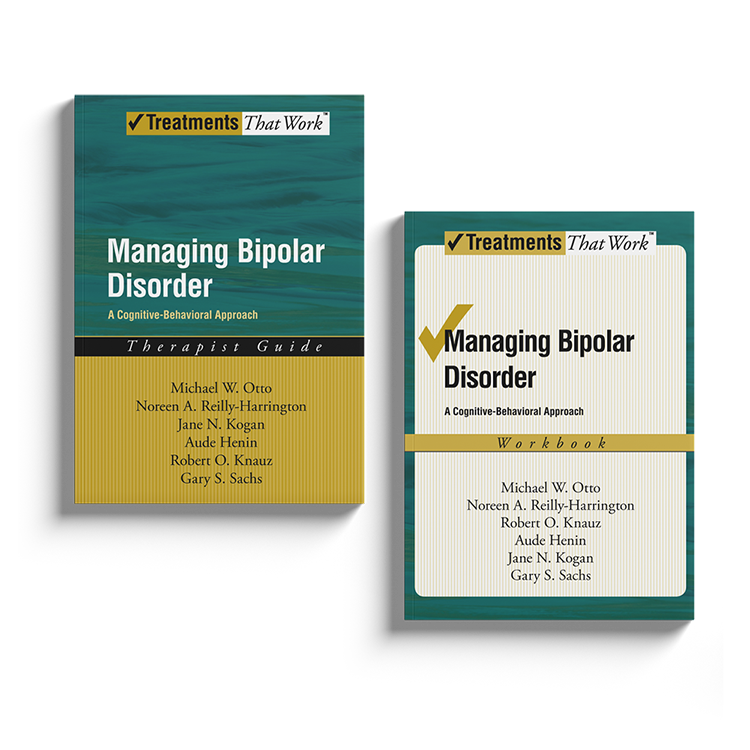
Overview
Bipolar disorder is a complex mental health condition affecting up to 5% of the population, characterized by recurring depressive and (hypo)manic episodes that often leave residual symptoms and impair daily functioning. Comorbid conditions such as anxiety and substance use disorders, along with elevated suicide risk, further complicate its course, making effective management essential. Managing Bipolar Disorder provides a structured yet flexible cognitive behavioral therapy (CBT) program tailored to address the unique challenges of bipolar disorder. Drawing on extensive clinical research, the program integrates psychoeducation, cognitive restructuring, behavioral activation, and relapse-prevention strategies. It promotes early detection of mood changes, lifestyle regulation, stress management, and skill-building to enhance coping and prevent relapse. This manual equips therapists with evidence-based strategies to deliver effective care, empowering patients to achieve greater stability and improved quality of life. By combining targeted interventions with ongoing medication, it offers a comprehensive approach to managing this challenging condition.
Why use this resource?
This workbook helps clinicians provide structured and evidence-based interventions for individuals with bipolar disorder. It is designed to:
- Support therapy sessions by providing structured CBT techniques.
- Integrate with pharmacological treatments for mood stabilization.
- Offer relapse prevention strategies tailored to the individual.
- Improve insight and coping mechanisms for clients managing their disorder.
Key benefits
Structured
Educational
Effective
Trusted
What difficulties is this for?
Bipolar Disorder
Extreme mood swings that include episodes of emotional highs (mania or hypomania) and lows (depression).
Integrating it into your practice
Assessment
Explore how clients experience bipolar disorder.
Psychoeducation
Teach clients about bipolar disorder and what maintains it.
Skills
Implement effective cognitive-behavioral interventions to manage key symptoms.
Monitoring
Use structured worksheets to track progress and refine interventions.
Relapse Prevention
Equip clients with long-term strategies for maintaining their progress.
Theoretical background and therapist guidance
Bipolar disorder is a complex and chronic mental health condition affecting 1% to 5% of the population, with an estimated 10 million individuals in the United States alone (Akiskal, 2007; Kessler et al., 1994). Typically emerging in the mid-teens, it is characterized by recurring mood episodes that include depressive and (hypo)manic phases. These episodes often leave residual symptoms and impair role functioning, even during periods of relative stability (Keck et al., 1998). Comorbid conditions, such as anxiety and substance use disorders, further complicate the course of the illness, leading to poorer outcomes, decreased treatment adherence, and higher hospitalization rates (Goldberg et al., 1999; Otto et al., 2006). Additionally, individuals with bipolar disorder face an elevated risk of suicide, with studies showing a nearly fourfold increase compared to other psychiatric populations (Brown et al., 2000).
This treatment manual, offers a structured yet flexible cognitive-behavioral approach designed to address these challenges. Drawing from clinical trials and extensive clinical experience, the program targets the core symptoms of bipolar depression while addressing factors that contribute to relapse. It builds upon established CBT strategies for unipolar depression (such as psychoeducation, cognitive restructuring, and behavioral activation) while introducing interventions tailored to the specific needs of individuals with bipolar disorder. These include training in problem-solving and interpersonal skills, strategies for stress management and lifestyle regulation, and protocols for early detection and intervention during prodromal symptoms of mood episodes (Miklowitz et al., 2007; Otto & Miklowitz, 2004).
The program promotes psychoeducation to help patients and families understand the nature of bipolar disorder, including the critical role of medication adherence, the impact of stress, and the importance of maintaining regular sleep and activity patterns. This structured approach is designed to be used alongside ongoing pharmacotherapy, which remains the cornerstone of bipolar disorder treatment. Medications such as lithium, divalproex, and lamotrigine, as well as newer atypical antipsychotics like aripiprazole and quetiapine, are integral to stabilizing mood episodes and supporting long-term management (Sachs et al., 2007).
This manual provides therapists with a detailed roadmap for delivering evidence-based care that is both effective and adaptable to individual patient needs. By combining pharmacotherapy with targeted psychosocial interventions, Managing Bipolar Disorder offers a comprehensive framework for improving outcomes and quality of life for individuals living with this challenging condition. Through its emphasis on skill acquisition, relapse prevention, and collaborative care, the program equips clinicians to address the multifaceted nature of bipolar disorder effectively.
The program includes two books:
- Managing Bipolar Disorder: Therapist Guide
- Managing Bipolar Disorder: Workbook
Authored by leading psychologists including David Barlow, Michelle Craske and Edna Foa, Treatments That Work™ is a series of manuals and workbooks based on the principles of cognitive behavioral therapy (CBT). Each pair of books (Therapist/Clinician Guide and Workbook) - contains step-by-step procedures for delivering evidence-based psychological interventions and will help you to provide the best possible care for your clients.
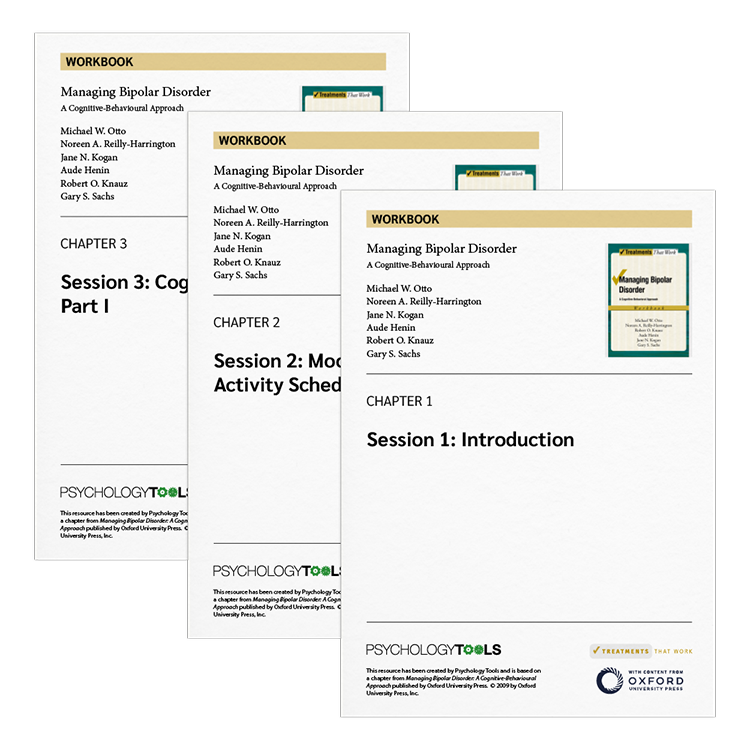
What's inside
- Guided exercises for mood charting and cognitive restructuring.
- Treatment contract templates for crisis planning.
- Problem-solving, social skills, and anger management strategies.
- Well-being diary and long-term goal-setting tools.
- Printable worksheets for tracking progress and practicing skills.
FAQs
How this resource helps improve clinical outcomes
By using this workbook, clinicians can help clients:
- Recognize early warning signs to prevent severe mood episodes.
- Develop long-term coping strategies for stability and well-being.
- Enhance treatment adherence through structured psychoeducation.
- Improve daily functioning with behavioral strategies for mood regulation.
Clinicians who use this resource also use
References and further reading
- Akiskal, H. S. (2007). The emergence of the bipolar spectrum: Validation along clinical-epidemiologic and familial-genetic lines. Psychopharmacology Bulletin, 40, 99-115.
- Brown, G. K., Beck, A. T., Steer, R. A., & Grisham, J. R. (2000). Risk factors for suicide in psychiatric outpatients: A 20-year prospective study. Journal of Consulting and Clinical Psychology, 68, 371-377.
- Cochran, S. D. (1984). Preventing medical noncompliance in the outpatient treatment of bipolar affective disorders. Journal of Consulting and Clinical Psychology, 52, 873-878.
- Goldberg, J., Garno, J., Leon, A., Kocsis, J., & Portera, L. (1999). A history of substance abuse complicates remission from acute mania in bipolar disorder. Journal of Clinical Psychiatry, 60, 733-740.
- Keck, P. E. Jr., McElroy, S. L., Strakowski, S. M., West, S. A., Sax, K. W., Hawkins, J. M., et al. (1998). Twelve-month outcome of patients with bipolar disorder following hospitalization for a manic or mixed episode. American Journal of Psychiatry, 155, 646-652.
- Lam, D. H., Watkins, E. R., Hayward, P., Bright, J., Wright, K., Kerr, N., et al. (2003). A randomized controlled study of cognitive therapy of relapse prevention for bipolar affective disorder: Outcome of the first year. Archives of General Psychiatry, 60, 145-152.
- Miklowitz, D. J., & Goldstein, M. J. (1997). Bipolar disorder: A family-focused treatment approach. New York: Guilford Press.
- Miklowitz, D. J., & Otto, M. W. (2006). New psychosocial interventions for bipolar disorder: A review of the literature and introduction of the systematic treatment enhancement program. Journal of Cognitive Psychotherapy, 20, 215-230.
- Miklowitz, D. J., Otto, M. W., Frank, E., Reilly-Harrington, N. A., Wisniewski, S. R., Kogan, J. N., et al. (2007). Psychosocial treatments for bipolar depression: A 1-year randomized trial from the systematic treatment enhancement program. Archives of General Psychiatry, 64, 419-426.
- Otto, M. W., & Miklowitz, D. J. (2004). The role and impact of psychotherapy in the management of bipolar disorder. CNS Spectrums, 9(11 Suppl 12), 27-32.
- Perry, A., Tarrier, N., Morriss, R., McCarthy, E., & Limb, K. (1999). Randomised controlled trial of efficacy of teaching patients with bipolar disorder to identify early symptoms of relapse and obtain treatment. British Medical Journal, 16, 149-153.
- Sachs, G. S., Nierenberg, A. A., Calabrese, J. R., Marangell, L. B., Wisniewski, S. R., Gyulai, L., et al. (2007). Effectiveness of adjunctive antidepressant treatment for bipolar depression. New England Journal of Medicine, 356, 1711-1722.
- Scott, J., Garland, A., & Moorhead, S. (2001). A pilot study of cognitive therapy in bipolar disorders. Psychological Medicine, 31, 459-467.
Just enter your name and email address, and we'll send you Managing Bipolar Disorder: Workbook (English US) straight to your inbox. You'll also receive occasional product update emails wth evidence-based tools, clinical resources, and the latest psychological research.
Product
Company
Support
- © 2026 Psychology Tools. All rights reserved
- Terms & Conditions
- Privacy Policy
- Cookies Policy
- Disclaimer
Working...
We value your privacy
This site uses strictly necessary cookies to function. We do not use cookies for analytics, marketing, or tracking purposes. By clicking “OK”, you agree to the use of these essential cookies. Read our Cookie Policy
